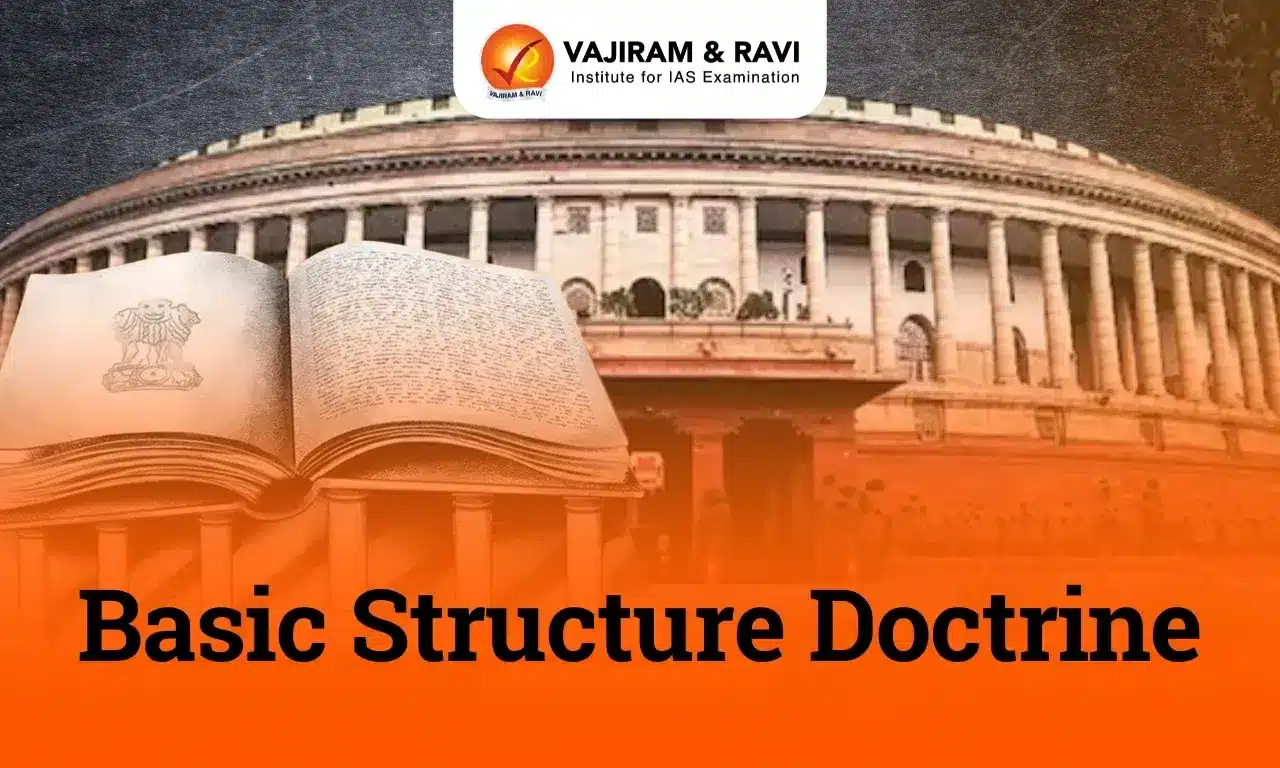Mauryan art and architecture were the culmination of a long movement that began indigenously in the Gangetic Plains, where it became the first major centre after the fall of the Indus Valley Civilisation. The beginning of Mauryan Art and Architecture was undoubtedly due to royal initiative but its flowering was rooted in the Indian soil. Apart from being developed indigenously, Mauryan Architecture also had influences from the Achaemenid Empire.
For the study of Mauryan history, information from written records by Indian and foreign authors is a great source. The most notable of them is Indica, by Megasthenes.
Features of Mauryan Art and Architecture
By the fourth century BC, the Mauryas had established their power in the Magadh region and by the third century BC, a large part of India was under Mauryan control.
- Indigenous in origin: Many scholars believe that Mauryan art originated indigenously as a combination of court and folk elements.
- Departure from earlier tradition: Mauryan art was different from the earlier art traditions in that it departed from the use of wood, sun-dried brick, clay, ivory, and metal to that of stone in huge dimensions.
- Achaemenid Influence: One of the important features of Mauryan art is its Achaemenid connection.
- It was due to Mauryan dominions touching Afghanistan, which had been erstwhile Achaemenid possessions.
- The Persian influence can be observed in Ashokan pillars and bell capitals.
- Stambha architecture, which originated indigenously in wood, was taken place by stone. Gradually, it included bases and capitals.
Mauryan Art and Architecture
Mauryas contributed significantly to both art and architecture. They introduced and greatly expanded the use of stone masonry. It can be understood from different forms of art and architecture like caves, stupas, pillars, and palaces.
Palace
|
Mauryan Palace (Eighty pillared hall and Arogya Vihar, Pataliputra) |
-The palaces of the Mauryan empire have been described in high regard by all the writers, such as Megasthenese, Patanjali (in his Mahabhasya), and Arrian (hecompared Chandragupta’s palace with the buildings of Achaemenian cities such as Susa and Ekbatan). The overall planning of the palaces was inspired by Achaemenid palace art, with some differences such as the use of wood and the simple monolithic style of pillar construction. – Megasthenese mentions that the palaces of Pataliputra were surrounded by wooden walls with a number of holes created to let the arrow pass by. – The royal assembly building in Kumhrar was a hall with 80 pillars with a wooden roof and floor. The hall was used for various purposes including the third Buddhist Council, during the reign of Ahsoka. |
Pillars
- The Mauryan pillars are monolithic, tall, lustrous, well-proportioned, free-standing structures with tapering shafts.
- They are made of sandstone, which was quarried at Chunar.
- The Mauryan (Ashokan) pillars was different from those of Achaemenid empire:
- Mauryan pillars are single, rock-cut structures with local symbols and motifs whereas; the Achaemenid pillars are constructed in pieces by a mason.
- Inscriptions engraved by Ashoka have been discovered on stone pillars he constructed in India, called Pillar Edicts.
- Capital figures like the bull, the lion, the elephant, etc. were generally carved into the top of the pillar.
| Pillars | Description |
|
Sarnath (Lion Capital) (Uttar Pradesh) |
– Known as the Mauryan pillar capital. – Hsuen Tsang mentions a seventy-foot-high pillar with shining polish standing at the same site. – Roaring Lion: It is carved with notable, voluminous roaring lion figures firmly standing on a circular abacus – Abacus: It depicts a chakra (wheel) with twenty-four spokes in all four directions
– A bell-shaped lotus: It forms the lowest portion of the pillar – This pillar capital represents Dharmachakrapravartana, the Buddha’s first sermon. – Our national emblem is based on the Sarnath capital.
|
|
Lauriya Nandangarh (Bihar) |
– The top of the pillar is bell-shaped with a circular abacus. – It has six edicts inscribed on its polished stone shaft. – Situated on the trade route that connects the eastern Gangetic basin with western Asia. – Sculpted with a row of geese, the drum is supported by the lotus bell capital. A seated lion crowns the capital. – Emperor Ashoka commemorated the site of Lauriya Nandangarh with a Dharma Stambh adorned with a single Lion Capital at the top. |
|
Rampurva (BullCapital) (Delhi) |
– It is a realistic depiction of a Zebu bull. – It is a mixture of Indian and Persian elements. – The motifs on the base, atop the inverted lotus, the rosette, the palmette, and the acanthus ornaments are not Indian features. – Established at Rampurva, Bihar, it has been placed at the Rashtrapati Bhavan. – Note: A Lion Capital was also erected at Rampurva. |
|
Prayag -Prashasti (Allahabad Pillar) (Uttar Pradesh) |
– It carries major pillar edicts from 1 to 6. – It also contains the Schism Edict of Ashoka. – The inscriptions of Gupta Emperor Samudragupta and Mughal Emperor Jehangir are also attributed to this pillar. – The inscription mentions that Samudragupta defeated twelve rulers in his South India expedition. |
Stupas
Due to the popularity of Buddhism and Jainism, stupas were constructed on a large scale.
|
Sanchi Stupa (Madhya Pradesh) |
– The great stupa at Sanchi was built with bricks during the time of Ashoka and later was covered with stones. – It was enlarged using local sandstone during the Sunga period. – The elaborately carved gateways were added later (by Satvahanas) in the 1st century BC. It depicts Jataka stories. – The main body of the stupa symbolises the cosmic mountain.
– The reliefs of Sanchi display the following quite prominently.
|
|
Bharhut Stupa (Madhya Pradesh) |
– Originally built by Ashoka but enlarged later by Shungas. – It is important for its sculptures. – The important features:
|
|
Dhauli Shanti Stupa (Orissa) |
– Ashoka laid the foundation of Dhauligiri Shanti Stupa at a place known for the end of the Kalinga War. – The overall structure is in the shape of a dome. – The Dhauli Shanti Stupa has four massive idols of Lord Buddha in various postures, along with episodes from Gautam Buddha’s life carved on stone slabs. |
|
Dhamek Stupa (Sarnath, Uttar Pradesh) |
– Its construction was ordered by Emperor Ashoka. – In this location, Buddha delivered his very first sermon. – At Dhamek stupa Buddha revealed an eight-fold path leading to nirvana. – The site is described as Mriga-daya-vanam (sanctuary for animals). |
Rock-cut Caves
The beginning of rock-cut architecture in India was in the Mauryan period. These caves are present in two hills of Bihar – Barabar Hill and Nagarjuni Hill, both in Bihar. All these caves were dedicated to the monks of the Ajivika sect (founded by Makkhali Gosala).
|
Barabar Hill caves |
– Four caves are present here: Lomus Rishi, Sudama, Viswamitra and Karna Chopar Caves. – The Sudama cave is the earliest one. – The latest and best specimen among these caves is the famous Lomas Rishi cave. – These caves have inscriptions on Ashoka (King Piyadassi). – Consisting of an ante-chamber, having a doorway with sloping jambs. The most glaring feature of the cave is its sculptural ornamentation on the doorway. |
|
Nagarjuni Hill caves |
– Three caves are present in the Nagarjuni Hill: Vadathi ka Kubha, Vapiya ka Kubha, and Gopi ka Kubha. – Inscriptions on the Devanpiya Dasaratha (son of Ashoka) say that he donated it to Ajivikia monks. – Gopi has the largest chamber in the group, with polished walls as well as a floor (Mauryan polish). |
Pottery
|
Northern BlackPolished Ware |
– Developed in the Iron Age. – Highly polished gaze coating with black colour. – Generally used as luxury items. – Usually have a thin section, grey core, and distinctive glossy lustre. – Mainly consists of the standard dining set and tableware and excludes large or heavy forms. |
Sculptures
Large statues of Yakshas and Yakshinis are found at places like Patna, Vidisha and Mathura.
- It shows the popularity of Yaksha worship and how it became part of figure representation in Buddhist and Jain religious monuments.
|
Didarganj Yakshini (Chauri bearer) (Bihar) |
– Tall, well-proportioned, free-standing sculpture. – Made of sandstone with a polished surface. – It exhibits happiness and bounty. – Chauri (flywhisk) is held in the right hand. – The image demonstrates expertise in the way form and medium were handled. |
|
Dhauli Elephant (Orissa) |
– Carved in the living rock. – The Ashoka edict at the place ends with the word Sevto (white) in Pali. It suggests that it depicts Airavat, a white elephant depicted in Indian religious texts. – situated close to the battleground where Ashoka decided to shift away from warfare and towards Buddhism. |
Mauryan Literature
Literature flourished under Ashoka’s peaceful reign due to liberal religious practices and a thriving Mauryan economy.
| Kautilya’s Arthashastra |
– The exact year of its writing is unknown; even the identity of the writer (one or many) is doubtful. But Chanakya, Kautilya and Vishnugupta (all these names are for the same person) are credited as the writer. – It is a detailed work on statecraft. – It consists of 15 volumes (Adhikarnas).
– Kautilya clearly distinguishes between Dharmasthiya (civil law) and Kantaka Sodhana (penal law). – Several types of enslavement are mentioned in Arthashastra. – There was a variety of protection offered to the slaves, especially to the enslaved women.
– A boy born to a female slave who was fathered by her master was granted the legal status of the master’s son, according to the Arthshastra. – Kautilya also wrote Chanakya-shataka. |
| Works of Bhadrabahu |
– Spiritual teacher of Chandragupta Maurya. – Works:
|
| Indica by Megasthenes |
– It tells the story of India during the reign of the Maurya Dynasty. – According to it, the legendary Greek hero Heracles contributed to the construction of Pataliputra, a magnificent metropolis. – It talked about the nature of the economy and society of the Mauryan period. |
| Other sources mentioning Mauryan Empire |
– Mudrarakshasa of Vishakadutta – Rajtrangini of Kalhana – Mahabhashya of Patanjali – Vishnu Purana – Buddhist literature:
|
Last updated on April, 2025
→ UPSC Notification 2025 was released on 22nd January 2025.
→ The UPSC Vacancy 2025 were released 1129, out of which 979 were for UPSC CSE and remaining 150 are for UPSC IFoS.
→ UPSC Admit Card 2025 is expected to release in first week of May for CSE Prelims Exam 2025.
→ The UPSC Prelims 2025 is scheduled to be conducted on 25th May 2025 and UPSC Mains 2025 will be conducted on 22nd August 2025.
→ Apply once through it and aspirants can apply for various government exams conducted by UPSC.
→ The UPSC Selection Process is of 3 stages-Prelims, Mains and Interview.
→ UPSC Result 2024 is released with latest UPSC Marksheet 2024. Check Now!
→ UPSC Toppers List 2024 is released now. Shakti Dubey is UPSC AIR 1 2024 Topper.
→ Also check Best IAS Coaching in Delhi
Mauryan Art, Architecture and Literature FAQs
Q1. Why is the art of the Mauryan period important?+
Q2. What was the foreign influence on Mauryan art and architecture?+
Q3. What is the importance of Sanchi?+
Q4. What is Mauryan art and architecture like?+
Q5. What are the main literary sources of the Mauryan Empire?What are the main literary sources of the Mauryan Empire?+






























